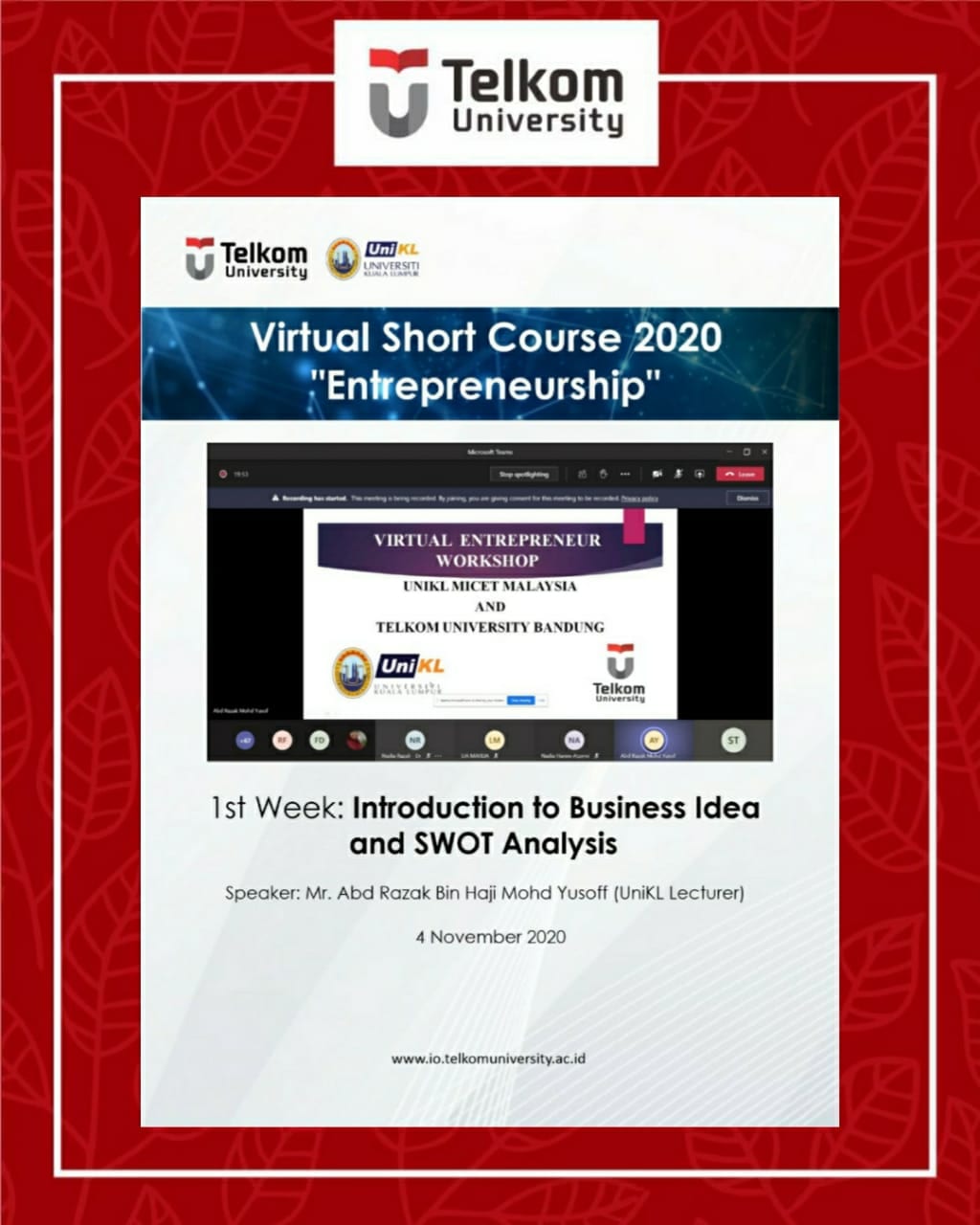
First Class of Virtual Short Course Tel-U & UniKL: “Introduction to Business Idea & SWOT Analysis”
First Class of Virtual Short Course Tel-U & UniKL: “Introduction to Business Idea & SWOT Analysis”. The 1st class of the Virtual Short Course, in collaboration between Telkom University Indonesia and Universiti Kuala Lumpur Malaysia, was implemented smoothly today, November 4th, 2020. Telkom University and Universiti Kuala Lumpur came up to conduct this Virtual Short Course to facilitate students in enriching students’ school life experience, deepening students’ cross-cultural skills and global mindset, building students’ relationship, and strengthening students’ global awareness. Entrepreneurship was chosen to be the theme of the Virtual Short Course Tel-U & UniKL because both Telkom University and Universiti Kuala Lumpur have similar branding which is the entrepreneurial university.
In this 1st class, Mr. Abd Razak Bin Haji Mohd Yusoff, a lecturer of Universiti Kuala Lumpur Malaysian Institute of Chemical and Bio-Engineering Technology, shared a material on the Introduction to Business Idea and SWOT Analysis. According to Oxford Dictionary, an idea is a conception or plan formed by mental effort (ways of thinking). Some people find generating idea hard because it deals with the creativity.
A research showed that high creativity can be gained in age 5 or younger; the older we are, the lower the level of creativity. However, we can still improve or sharpen our creativity. In term of sourcing for business idea, we have to avoid conventional thinking, just go beyond “Logical Minds” to search for “Realistic” solutions. In addition, we must do away with the negative thinking patterns that focus on obstacles and difficulties. There are 4 strategies to help you with business idea:
- Capturing – the 3B’s; The Artist Notepad
- Challenging – Difficulty; Feeling lost frustrating environment
- Broadening – Diverse knowledge; Wide interest
- Surrounding – Stimulate the mind; Rearrange room furnishings
Many business ideas come from the challenges. It means that we have to see the other side of the challenges by using our creativity because sometimes creativity can solve the problem. Try to develop the idea by 1) recognizing a need, 2) improving an existing product, 3) recognizing trend, 4) being aware of everything, 5) questioning assumptions, 6) identifying or naming it first, then develop it.
In creating a business idea, if you cannot manage from the scratch, try to innovate the exist one. Innovation is doing something different; it is a process of taking new idea to satisfied customers. The followings are 10 questions that might help you separate the merely clever from the ideas that stand a true chance of succeeding:
- Are you filling avoid?
- Do industry experts hate your idea?
- Does the idea have shelf life?
- What is high barrier to entry?
- Can the idea be priced attractively?
- How much funding will the idea need?
- How large is the market for the idea?
- Is the idea truly a stand-alone business, or is it an add-on feature?
- If it weren’t your idea, would you put money into it?
- Can you pitch your idea as a business in 20 seconds or less?
Those are the highlight materials delivered by Mr. Razak from today’s class. See you tomorrow to learn about Product & Services: Unique Selling Proposition.(IO)***